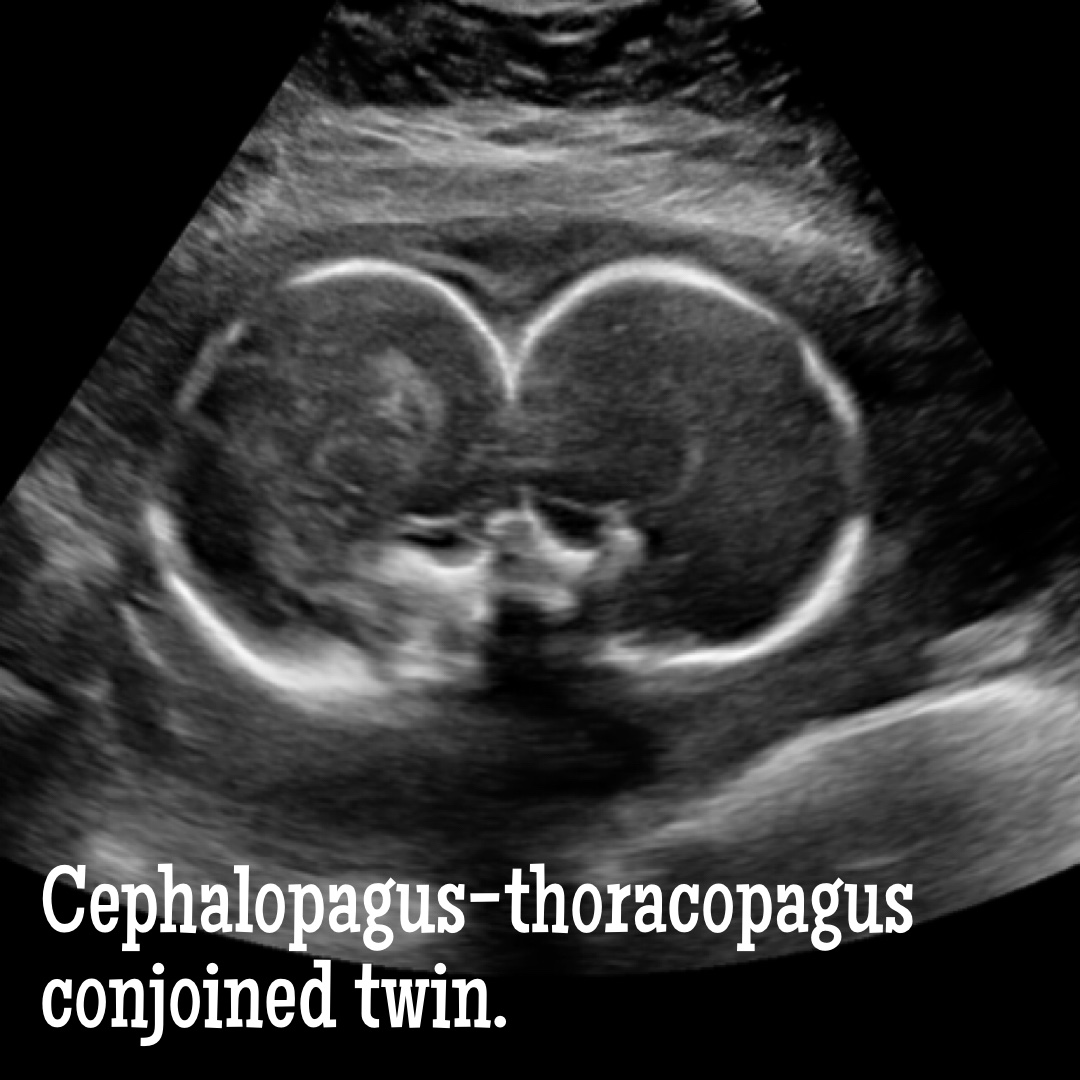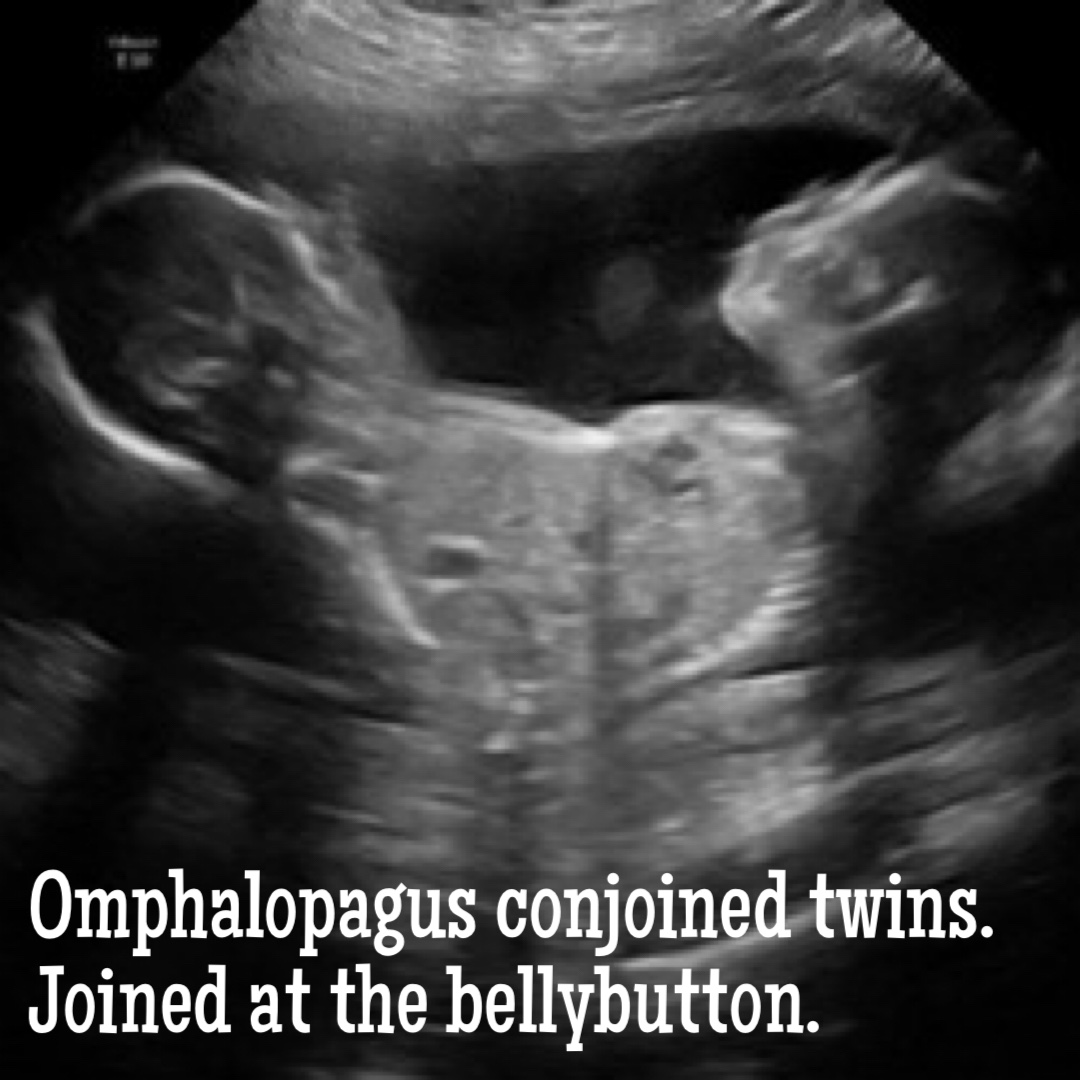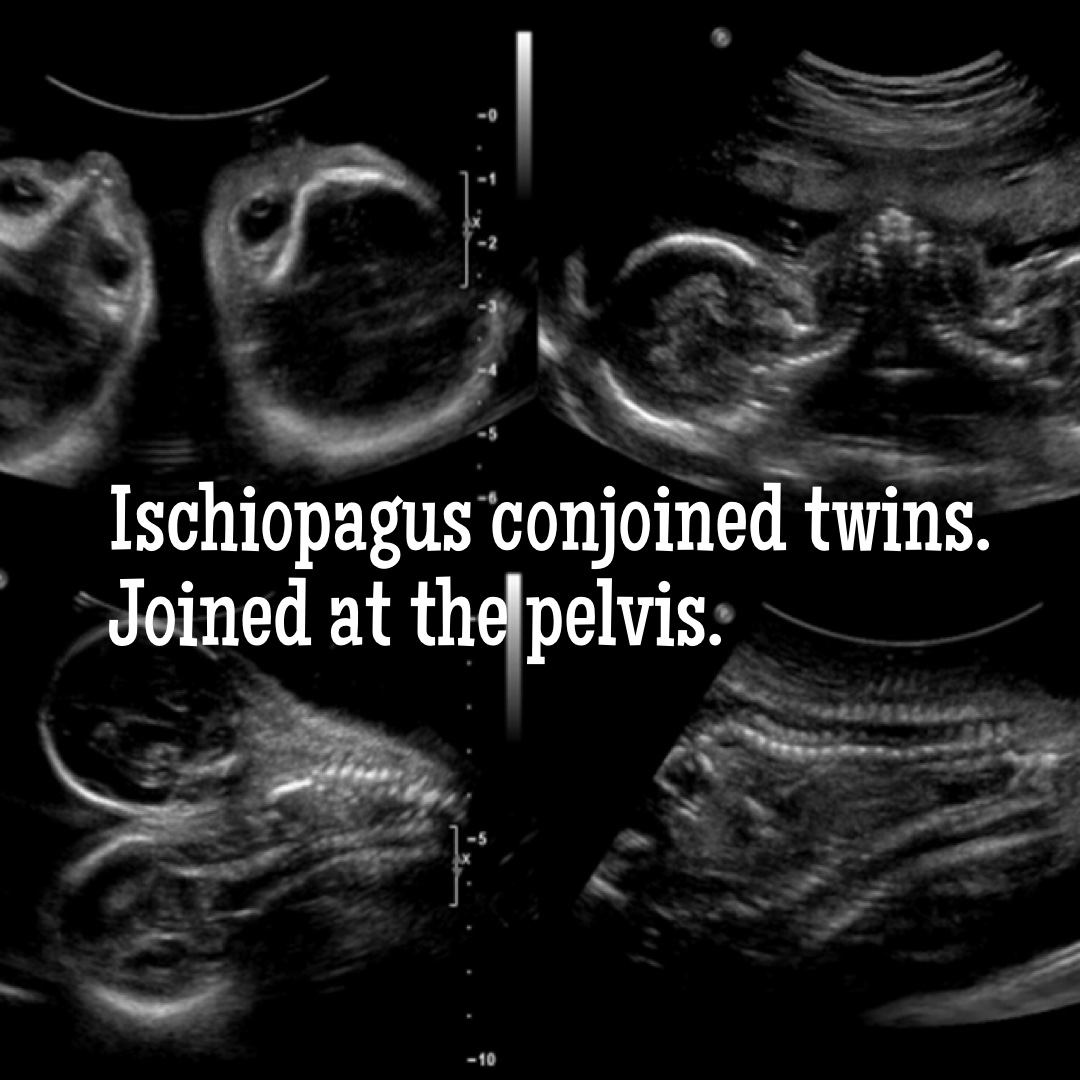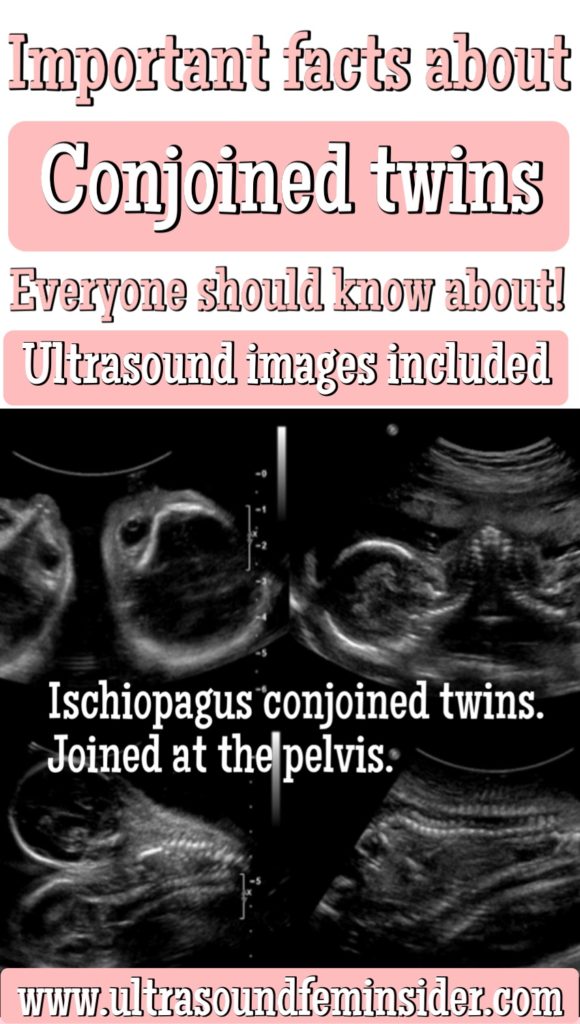Twins are a kind of multiple pregnancy when a woman gives birth to more than one baby at the same time. Twins occur when more than one egg is fertilized or when the same egg is fertilized more than once by one or two sperm, leading to formation of more than one fetus. In this article you’ll learn important information about Conjoined twins, ultrasound images are included in this article. Ready? Let’s begin.
What are Conjoined Twins?
Conjoined twins develop when an early embryo only partially separates to form two individuals. Although two fetuses will develop from this embryo, they will remain physically connected, most often at the chest, abdomen or pelvis, they may also share one or more internal organs.
Causes of this type of twin pregnancy.
Conjoined twins are identical twins who are joined together somewhere in the body. They are monozygotic twins which means that they share the same zygote. Sometimes, they also share some vital internal organs. Formation of conjoined twins is believed to be the result of late twinning. When the twinning occurs more than twelve days after fertilization of the egg, it may lead to formation of conjoined twins because the embryo may not split completely. This may be due to genetic or environmental factors.
Let me explain that better: Eight to 12 days after conception the embryonic layers that will split to form monozygotic twins begin to develop into specific organs and structures. It’s believed that when the embryo splits later than this, usually between 13 and 15 days after conception separation stops before the process of organogenesis is complete, resulting in conjoined twins.
Complications of conjoined twins.
Complications depend on where the twins are joined, and which organs or other parts of the body they share. When conjoined twins are diagnosed the family and the health care team need to discuss in detail the possible complications and how to prepare for them.
Pregnancy with conjoined twins is complicated and greatly increases the risk of serious complications. Conjoined babies require a C-section for delivery due to their complicated anatomy.
As with any other type of twin pregnancy, conjoined babies are more likely to be born prematurely, and one or both could be stillborn and die shortly after birth. Severe health issues for twins can occur immediately such as trouble breathing or heart problems and later in life, such as scoliosis, cerebral palsy or learning disabilities.
Conjoined twins are also known as Siamese twins.
Named after the famous conjoined twins, Eng and Chang Bunker from Siam. Conjoined twin births are very rare, amounting to around one birth in every 100,000 births. Mary and Eliza Chulkhurst, famously referred to as the biddenden maids, are one of the earliest known sets of conjoined twins. The ratio of male and female sets of conjoined twins was found to be three to one, and they are found more in certain countries like India or Africa.
Risk factors.
Because conjoined twins are so rare, and the cause is still not clear, it’s unknown what might make some couples more likely to have conjoined twins.
Symptoms.
There are no specific signs or symptoms that indicate a conjoined twin pregnancy. As with any twin pregnancy, the uterus may grow faster because is carrying 2 babies, and there may be more fatigue, nausea and vomiting early in the pregnancy. Conjoined twins can be diagnosed early in the pregnancy using regular ultrasound.
Ultrasound images of conjoined twins.
Survival chances.
Conjoined twins rarely survive because of the complexity of the bodies. Most of them are stillborn or die within twenty-four hours after birth. Conjoined twins can be separated surgically if none of the vital organs are involved. There are different kinds of conjoined twins, depending on the part of the body where they are joined.
Types of conjoined twins.
These are cephalopagus, craniopagus, thoracopagus, dicephalic parapagus, Ischiopagus, omphalopagus, parapagus, pygopagus and rachipagus. There are also some rare kinds of conjoined twins, such as parasitic twins (where one twin is not completely formed and depends on the other twin to sustain life), and fetus in fetus (where one twins fetus is present inside the body of the other twin).
Areas of the body they may be joined:
- Head and chest. Cephalopagus twins are joined at the face and upper body. The faces are on opposite sides of a single shared head, and they share a brain. These twins rarely survive.
- Head. Craniopagus twins are joined at the back, top or side of the head, but not the face. Craniopagus twins share a portion of the skull. But their brains are usually separate, though they may share some brain tissue.
- Chest. Thoracopagus twins are joined face to face at the chest. They often have a shared heart and may also share one liver and upper intestine. This is one of the most common sites of conjoined twins.
- Dicephalic parapagus is a rare form of partial twinning with two heads side by side on one torso. Infants conjoined this way are sometimes called “two-headed babies” in popular media. The condition is also called parapagus dicephalus.
- Pelvis. Ischiopagus twins are joined at the pelvis, either face to face or end to end. Many ischiopagus twins share the lower gastrointestinal tract, as well as the liver and genital and urinary tract organs. Each twin may have two legs or, less commonly, the twins share two or three legs.
- Abdomen. Omphalopagus twins are joined near the bellybutton. Many omphalopagus twins share the liver, and some share the lower part of the small intestine (ileum) and colon. They generally do not share a heart.
- Trunk. Parapagus twins are joined side to side at the pelvis and part or all of the abdomen and chest, but with separate heads. The twins can have two, three or four arms and two or three legs.
- Base of spine. Pygopagus twins are commonly joined back-to-back at the base of the spine and the buttocks. Some pygopagus twins share the lower gastrointestinal tract, and a few share the genital and urinary organs.
- Length of spine. Rachipagus also called rachiopagus are twins are joined back-to-back along the length of the spine. This type is very rare.
Related articles you might like to check.
Tips to prepare for a healthy pregnancy.
How to Naturally Prevent Pregnancy Depression.
Foods To Avoid During Pregnancy.
Pregnancy Loss. How To Overcome The Pain.
Final thoughts.
The good news about today’s topic is that although many conjoined twins are not alive when born or die shortly after birth, advances in surgery and technology have improved survival rates. Some surviving conjoined twins can be surgically separated. The success of surgery depends on where the twins are joined and how many and which organs are shared, as well as the experience and skill of the surgical team.
I hope this article was helpful to you, feel free to check other articles for more useful information.
Zadi, xo
Disclaimer: The medical information on this post is for educational and entertainment use only. Under no circumstances, this information is to replace your doctor’s advice or to treat any disease. For proper care, always visit your doctor.













